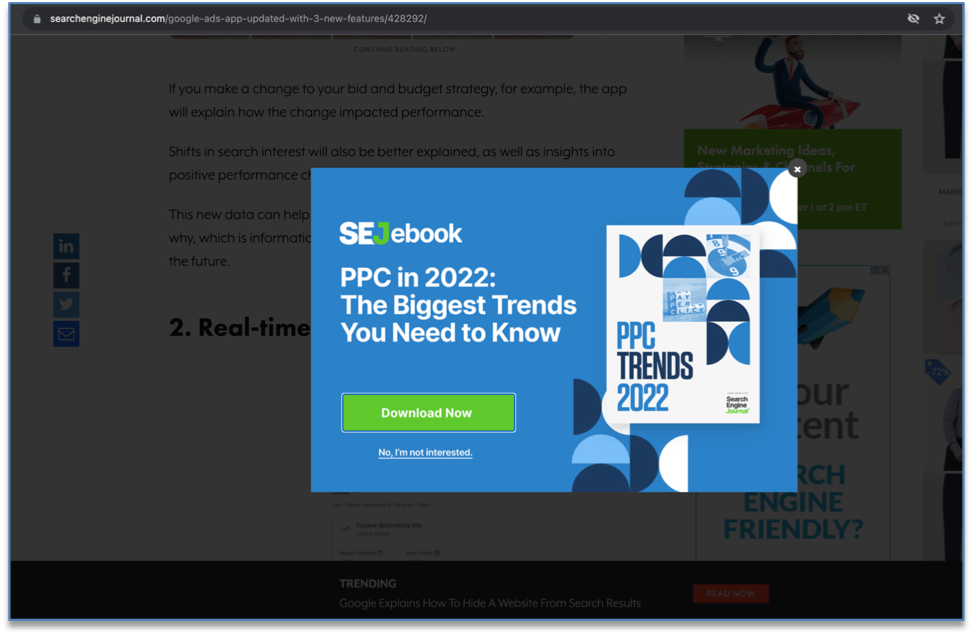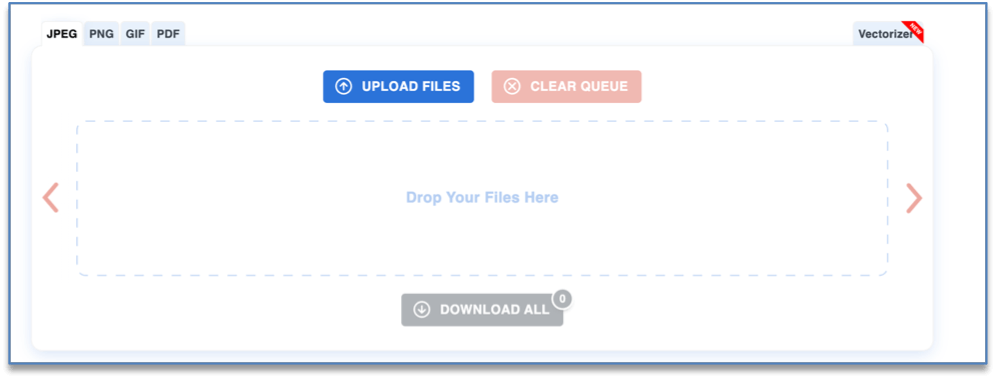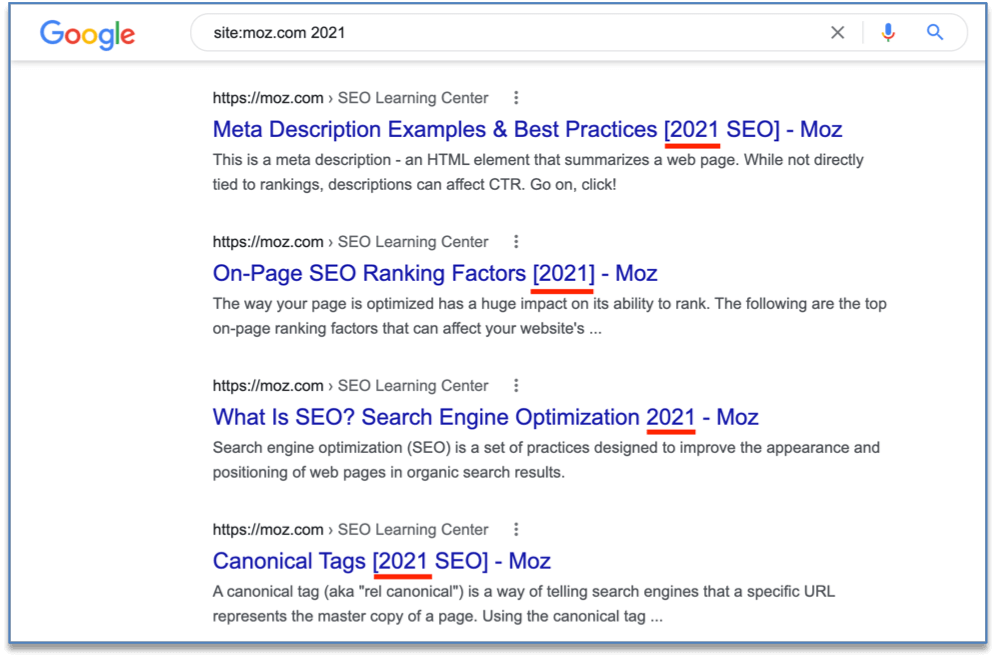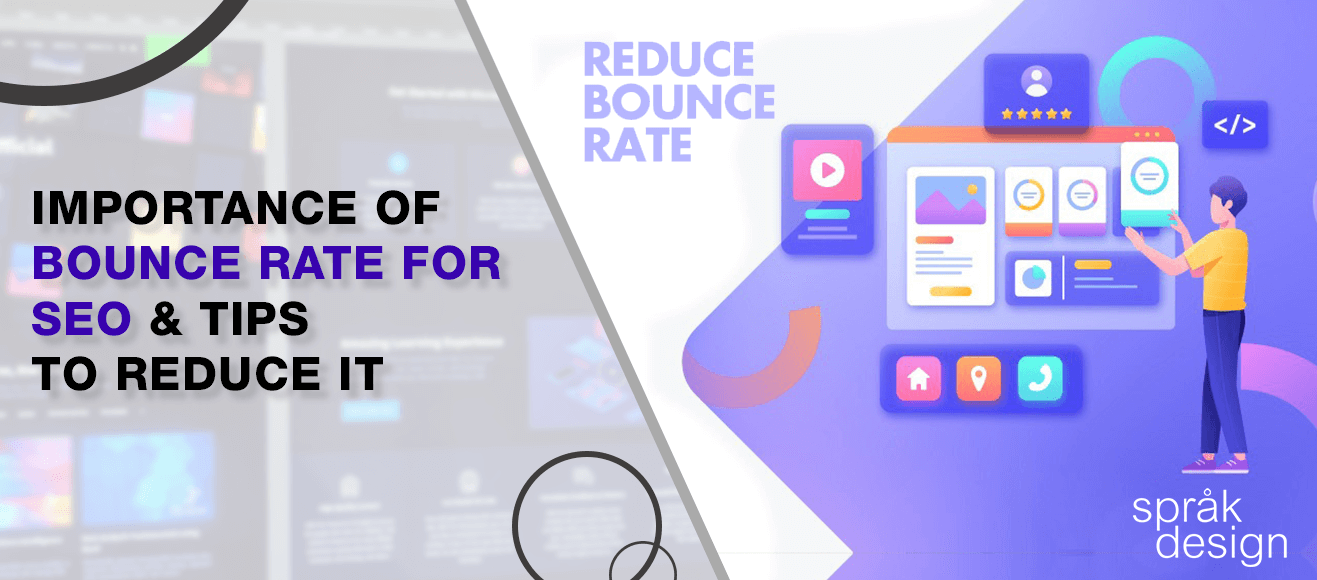Importance of Bounce Rate for SEO & Tips to Reduce it
Last Update : 12 January 2023
What Is Bounce Rate?
Suppose someone visited your website. They scrolled down a little and left without visiting any other page — you have a bounce.
Now, suppose three out of every ten visitors did this. You have a bounce rate of 30 percent.
If you need a definition, here it goes:
“Bounce rate is the percentage of visitors who leave landing pages.”
Why Bounce Rate Is Important for SEO?
1) Indicator of User Experience
User Experience (UX) is a critical Google ranking factor. And search engines measure it through several metrics, one of which is said to be the bounce rate. It makes sense as a bounce happens because of:
a) A bad design
It takes only one-tenth of a second for a user to form an impression of your website. And that first impression solely depends on your website design.
b) Shallow content
If your content is not good, you will lose the user, causing a bounce. Quality content with good visuals like photos or graphics is the only antidote.
So, if you have a high bounce rate, Google might think your website fails to satisfy users. This affects your ranking and business.
2) Key to User Engagement
Every user who bounces is a lost opportunity for conversion. It doesn’t matter how many visitors you attract to your website if they don’t convert.
That’s why bounce rate is such an important Key Performance Indicator (KPI). It lets you know whether the funds you invested in SEO and website design are producing results.
You should, however, keep in mind that a high bounce rate doesn’t necessarily mean poor content. The industry, too, can be a determiner. For example, blogs normally have a high bounce rate (70-90%). This doesn’t mean all blogs have poor content. It may be that users find their answers on the landing page itself.
Tips to Reduce Bounce Rate
1) Make Your Content Lucid
Rule 1 of UX is creating quality content. But this strategy will fall flat if the presentation of your content is not up to the mark. Here are a few points to keep in mind.
a) Clear language
Your language shouldn’t contain complicated phrases or lesser-known words. Imagine that you are explaining the topic to your friend.
b) Good formatting
Break your content into paragraphs containing one focal point. Paragraphs shouldn’t exceed 50 words. But that rule can be bent depending on what you are talking about.
c) Assistive devices
These are subheads, numbers, and bullet points you can use in your text to help a reader understand the topic.
2) Limit Your Pop-ups
Some webmasters believe an aggressive pop-up campaign can increase conversion. Yes, there is some truth to it, hence the proliferation of such devices. But if you want long-term growth, you may want to limit or do away with pop-ups.

A large section of users regards pop-ups as annoying. It obstructs reading, diverts attention, and makes users bounce. Now, if you must use them for reasons like email ID capture, use them unobtrusively.
Avoid launching a pop-up immediately after a page load. Wait a few moments for your readers to appreciate the design and taste the content.
3) Reduce Your Page Loading Time
The ideal page loading time on mobile is 2-3 seconds. Any longer, and your visits will be halved. There are a few tricks you can use to increase your speed.
a) Reduce HTTP requests
Every time you click on a link, the browser makes HTTP requests with the server. These requests are for images, scripts, and stylesheets. If you reduce the number of these requests, you reduce the time to load your page.
b) Minify your images
Images and other visual assets are the heaviest files on a website. If you reduce their size, your website will load even in a poor connection.
You can use tools like tinypng or compresjpeg to compress images.

4) Localize Your Landing Pages
User engagement greatly improves when you show a user localized content. That is content in their language and containing their cultural elements. This is ideal for websites catering to an international audience.
“You can also use A/B testing to see which strategy increases user engagement and conversion. It helps you improve critical UX elements like headlines and Call to Action (CTA)”, says Keon Hoffman of Haitna – A Dallas SEO company.
This way, you can test several options at once and pick only the best. It also obviates unnecessary changes to your content strategy later.
5) Update Your Content
Old content is one of the biggest reasons for high bounce rates. This is especially so for technology and internet-related websites.
For example, suppose you have a piece on SEO you wrote a couple of years ago. You neither updated it nor replaced it to suit changing trends.
Now, you might still attract visitors, but they will leave the moment they realize your content is old. That’s because visitors seeking such content want the latest information.
Extra: If you don’t know which articles need updating, enter this on Google: ‘site:yourwebsite.com year.’ The SERP will show your articles in chronological order.

6) Use Different Types of Content
As mentioned earlier, content plays a major role in keeping visitors on your site. But textual content alone can’t do that. Over the past decades, the importance of video has grown massively.
This type of content doesn’t have to be traditionally shot videos. You can use animations, narrated motion graphics, and the like to grab attention. Also, an auto-playing video in the background reduces bounce rate and increases UX.
Videos are also the perfect tool to tell your brand story. A good brand story is critical for brand recall, revisit, and conversion.
Bounce Rate & SEO FAQs
1) Which is More Important, Bounce Rate or Dwell Time?
Dwell time. That’s because dwell time gives you a better picture of user engagement. Dwell time lets you know how long a user stays on a landing page. Another important metric is ‘scroll depth.’ It lets you know whether your visitor is reading/viewing the content on your site.
2) What is a Good Bounce Rate?
This depends on which industry you are in. If you are in ecommerce, the average bounce rate is 20-45 percent. But don’t panic if you see up to 90 percent for your blog. That’s the average bounce rate for blogs, portals, and dictionaries. So, know your industry before working on reducing bounce rate.
3) Is Bounce Rate Important for SEO?
Bounce rate can indeed help you improve the look and feel of your website. Many bounces because of the way a website looks. You can do an A/B test for several options of the same landing page to test which design engages the user better.
4) Why is My Bounce Rate High?
There can be several reasons. The most obvious are the following:
a) The website’s design may be unappealing
b) Content may be shallow; users may not be finding what they search
c) Misleading metadata. This makes your visitor feel deceived.
d) The type of your website. You don’t have to worry if your website is a blog or a portal


